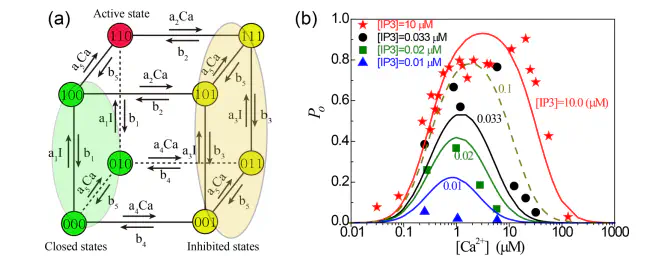Suppressing effect of Ca2+ blips on puff amplitudes by inhibiting channels to prevent recovery

Abstract
As local signals, calcium puffs arise from the concerted opening of a few nearby inositol 1,4,5-trisphospate receptor channels to release Ca^{2+} ions from the endoplasmic reticulum. Although Ca^{2+} puffs have been well studied, little is known about the modulation of cytosolic basal Ca^{2+} concentration ([Ca^{2+}]{Basal}) on puff dynamics. In this paper we consider a puff model to study how the statistical properties of puffs are modulated by [Ca^{2+}]{Basal}. The puff frequency and lifetime trivially increase with the increasing [Ca^{2+}]{Basal}, but an unexpected result is that the puff amplitude and the maximum open-channel number of the puff show decreasing relationship with the increasing [Ca^{2+}]{Basal}. The underlying dynamics is related not only to the increasing puff frequency which gives a shorter recovery time, but also to the increasing frequency of blips with only one channel open. We indicate that Ca^{2+} blips cause the channels to be inhibited and prevent their recovery during interpuff intervals, resulting in the suppressing effect on puff amplitudes. With increasing [Ca^{2+}]_{Basal}, more blips occur to cause more channels to be inhibited, leaving fewer channels available for puff events. This study shows that the blips may play relevant functions in global Ca^{2+} waves through modulating puff dynamics.